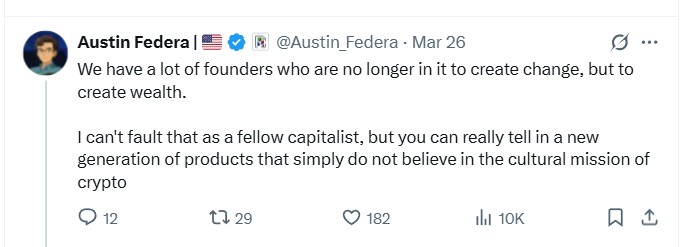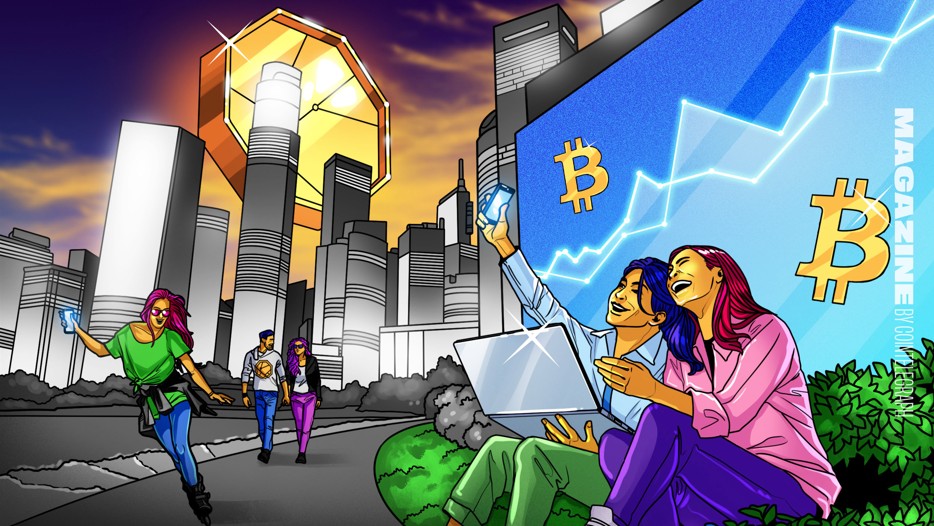For crypto fans who came of age during earlier eras — back when
  |
For crypto fans who came of age during earlier eras — back when Bitcoin was going to bank the unbanked and stop all wars, or even during the ICO boom when tokenizing carbon credits and disrupting dentistry were touted as the future of finance — the last couple of years have been incredibly depressing.
On the one side, some Bitcoiners who used to want to smash the unfair financial and banking system now cheer the world’s biggest banks and governments for gobbling up an increasing percentage of the supply.
And on the other side, there’s the financial nihilism of memecoin trading, where nothing of value is built or created — just a production line designed to extract as much cash as possible from retail. The vast majority of Pump.fun users, 99.6%, haven’t even made $10,000 on the site.
Ethereum creator Vitalik Buterin has always believed crypto can make the world a better place but seemed to have a crisis of faith back in February about where the industry was headed.
“Do I feel good when I hear people from crypto twitter and VC firms telling me that PvP KOL degen casino that’s money-losing for >99% of its own users is the best product market fit that crypto is going to get, and it’s ‘condescending and elitist’ to wish for something better?” he asked.
So how did crypto lose its way, and does the industry need to rediscover idealism and big dreams to get its mojo back?


Peace, love and crypto’s anarcho-capitalists
Scott Melker, better known as the Wolf of All Streets, says the early days of crypto were infused with a much greater sense of purpose than today.
“Early cypherpunks were true libertarians who deeply believed that money and the government were broken and that Bitcoin and blockchain technology could fix them,” he tells Magazine.
Ethereum co-founder Joe Lubin says the beauty of Bitcoin and crypto in those early days was how it attracted “philosophically diverse” groups to imagine different possible futures using the tech, including “cypherpunks, crypto-anarchists, libertarians, hackers, leftists, anti-corporate activists, and even socialists.”
“It is a testament to the power of the technology that all of these philosophies saw elements of what they cared about in the decentralized protocol technology, because it was flexible enough and powerful enough to build anything on top of it.”
Bitfinex chief technology officer Paolo Ardoino says there are plenty of true believers still building in crypto, but idealism has been “overshadowed by speculation.”
“From the beginning, blockchain was about financial inclusion, self-sovereignty, and breaking free from the limitations of the traditional financial system. But as the market grew, speculation took center stage, and for many, crypto became just another casino rather than a tool for empowerment.”


The ICO era was 99% memes,
However, idealism and mercenary financial speculation have existed side by side throughout crypto’s history.
In many ways, the initial coin offering boom in 2018 foreshadowed the memecoin frenzy, given many projects were little more than a half-baked idea (or meme) spun into a white paper and presentation deck that earned millions.
It was often cynical and exploitative, with many ICO founders frittering the money away before they’d even built a minimal viable product. ICO mills sprung up to scour the internet for new founders, who they put in with market makers, exchanges and marketing agencies to generate new ICOs.


“They had a whole playbook, and they would launch the ICO and just spit them out the other side and take 10% of the tokens,” recalls Kain Warwick, who ran Australia’s most successful ICO, which turned into Synthetix. “Like 98%, 98% of ICOs were [scams].”
A 2018 study by Satis estimated that 81% of ICOs worth over $50 million were scams, while later research in 2022 from the University of Vaasa put the figure at 56.8%.
But the era did produce many quality projects that still lead the industry today, including Aave, Chainlink, Bancor, Polkadot, Tezos, Filecoin and even EOS, which is now known as Vaulta and run by its community.
“If you go back in time and stop ICOs from ever happening, the world’s a worse place,” says Warwick. “Did people lose money? Yes. Did a lot of grift happen and a lot of wastage? Yes, but we got so much good stuff out of it. Huge investments in infrastructure and DevEx (Developer Experience) and all of that stuff would not have happened without ICOs.”


Crypto idealism turns into ideology
Back in those days, everyone at…
cointelegraph.com
